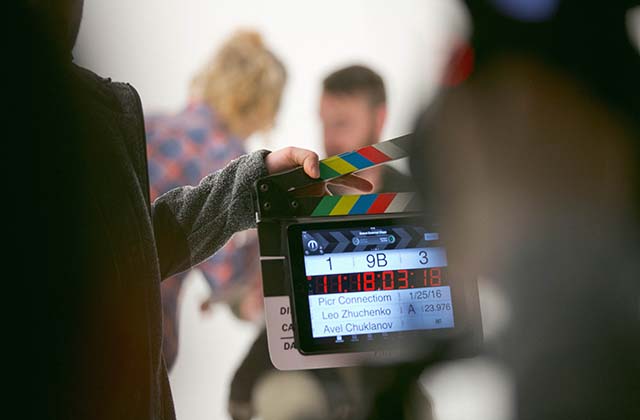
Updated on June 22, 2022
Quick Fixes to Improve Your Social Media Strategy
Social media is a vital part of any business strategy. It’s a great way to connect with your customers, build an audience and promote your brand. However, for many businesses, it’s not just about the numbers. The way social media management manage my strategy there is no way that we can’t attract the audience.
For example, if you’re trying to increase sales, you should look at the ROI (return on investment) of Facebook ads and see if they’re worth the money. If you’re trying to get more traffic, then look at how effective your social media marketing campaigns have been at driving traffic to your website.
If you’re not getting the results you want from your social media efforts, then it might be time for some quick fixes that will help improve your social media strategy:
- Post less but better quality content
- Use automated scheduling tools
- Create a Facebook group for customer support and engagement
- Make sure all of your social media accounts are connected
In a world where the average person spends more time on social media than they do with their families, it’s easy to get lost in the sea of content.
To keep your business at the top of mind, here are some quick fixes for your social media strategy:
Take stock of what you’ve got. If you’re not sure what your current state is, start by making a list of all your social media profiles and accounts. Next, take note of how often you post and engage on each platform.
Set goals and expectations. Determine what success looks like for each platform and set realistic goals that align with those expectations. Also consider how much time you can realistically dedicate to each platform given your other responsibilities (i.e., don’t set a goal of posting once per day if it means that’s all you’ll be doing).
Refresh your content calendar. If you haven’t refreshed your content calendar in a while, now is a good time to do so! Consider revising outdated posts or adding fresh ones that reflect your brand’s personality and interests while also keeping an eye out for holidays and special events (like Mother’s Day or Father’s Day).
If you’re like most small businesses, you probably haven’t invested much time or energy into your social media strategy.
But it’s not too late to catch up. Here are seven quick fixes that can help improve your social media engagement:
- Make sure the right people are monitoring your accounts.
- Add a consistent voice and tone to all posts, whether they’re personal or business-related.
- Set clear expectations for what kind of content is welcome on each platform.
- Post regularly (but not too often) on each platform, with a mix of personal and business posts throughout the day or week, as appropriate for each network.
- Use hashtags sparingly — some platforms don’t allow them at all — and make sure they’re relevant to your post topic so people searching for them will find them in search results instead of having to click through to see if your post is relevant to what they’re looking for.
Social media is a powerful tool. It can help you build your brand and make your business more visible. But if you’re not using it right, or if you’re trying to do too much with too little time and money, it can backfire and hurt your business.
You don’t need to hire a social media manager to improve your strategy. Here are some quick fixes to get your social media efforts on track:
Set up a central hub for all of your accounts. If you have multiple accounts for different purposes — say, a personal Facebook page and a professional LinkedIn profile — having them all in one place makes it easier to plan and manage them. Try Hootsuite or Buffer for this purpose.
Make sure each post has a call-to-action (CTA). This lets people know what they should do next after reading or viewing your content. CTAs can include asking questions, directing followers to another page (like yours) or offering an incentive for sharing the post with others. Find out the best way to set you CTA in your post.

Updated on June 21, 2022
How to Use Images To Improve Rankings in the Search Engines
The use of images in your website or blog can help improve your rankings in the search engines. You may be wondering, “Why should I use images?” The answer is simple: images are a great way to attract visitors and get them to stay longer on your site. Every piece of information need to be filled in like image alt tags that is why you need a reliable SEO consultant Sydney.
The more time they spend on your site, the better chance you have of ranking higher in the search engines. And when visitors stay longer on your site, their chances of engaging with you via social media increases as well.
There are two ways that images can help improve your rankings in the search engines:
Images help people understand what you’re offering, which helps them decide whether or not they want to purchase from you. The more credible you are as a company and as an individual, the better off you’ll be when it comes to SEO (Search Engine Optimization).
When people see what it is that you offer, they’ll have a better understanding of what it is that they’re looking for. They’ll also know whether or not they need your services at all!
Images help people remember who you are and how important your products/services are for them. If someone sees an image of something that interests them and then sees another image later on down their feed or across multiple sites.
Images are an important part of your site. They add style, color and personality to your site. They also improve user experience and help you rank better in search engines.
The use of images is nothing new for web designers. However, the way we use images has changed over time. A few years ago, we used to insert any image we could find on our websites just because we thought it looked good. Today, we know that Google uses images as a ranking factor and we use them with purpose and intent.
Here are some ways that you can use images to help your rankings:
- Create an Image Gallery
- Add Alt Text to Your Images
- Use Image Sizes Appropriately
Images are a great way to convey information quickly, in a way that’s memorable and easy to understand. They can help you increase your conversion rates, improve your SEO rankings and even generate more revenue. Here are some tips for using images to improve your SEO:
Use Textured Images
Using images on your website is an effective way of improving the load times of your pages. If you want to take this a step further then you can use textured images instead of plain ones. These are higher resolution images that have more detail and require more bandwidth to download. This means that they will actually make it harder for search engines like Google and Yahoo! to crawl them effectively.
Create A Gallery Of Images
If there’s one thing that Google loves, it’s having multiple anchor text links pointing back at itself from multiple sources. The best way to do this is by creating a gallery of images with links back to the homepage or other important pages on your site. You can then embed these galleries into relevant articles or place them in prominent positions around your site (such as within the sidebar or footer).

Updated on June 20, 2022
How to reduce Cinematic Motion
When you shoot with a camera, there are many things that can affect the quality of the footage you produce. One of those things is the amount of motion blur in your footage. Motion blur is the result of shutter speed not being fast enough to capture an image without blurring. This usually happens when you shoot hand-held or pan quickly with a tripod. Later on in the film production process, you’ll see that producers and filmmakers tend to use tv storyboard out a film.
There are many ways to reduce motion blur in post-production, but there are also some quick and easy fixes that can be done while shooting to reduce it before you even begin editing. Here are some tips on how to reduce Cinematic Motion:
1) Use a Tripod
2) Use a Stabilizer
3) Use Slow Shutter Speed
In the video above, I talk about how to reduce cinematic motion, or what I like to call ‘dragging’. This is especially important if you are going for a realistic look. If your animations look too fluid, with no resistance or drag, then it will look unrealistic.
To reduce cinematic motion, there are a few things you can do:
- Reduce the number of keyframes in your animation
- Increase the amount of easing in your keyframes
- Use spring-based physics for bounce-backs and elasticity
- Reduce the velocity of objects that are moving quickly.
Reducing motion blur can help to make your video more cinematic. You can do this in a variety of ways, but the most common is to reduce the shutter speed on your camera or adjust the frame rate in post production.
Shutter Speed
One way to reduce motion blur is by increasing the shutter speed. This action will allow for less blurring due to movement. The downside is that you will get more light coming in from the top and bottom of your frames, giving you an uneven exposure across your image. This is known as rolling shutter issues.
Frame Rate
Another way to reduce motion blur is by changing your frame rate in post production. Most cameras shoot at 24 frames per second (fps), which means each frame is shot every 1/24th of a second. This creates smoother looking movement than 30 fps or 60 fps would create because it’s more realistic when compared to what we see with our eyes under normal circumstances (note: this will only be truly noticeable if you are watching on a screen that displays at 24 fps).
Cinematic motion is a term used in video production to describe the motion of objects that appear to be moving at a slower pace than real life. This type of motion can be used to enhance the drama or emotion of a scene and create a more cinematic look and feel. While there are many ways to achieve this effect, one of the most popular methods is using keyframing.
Key framing is a technique where you set specific values for an object’s position, rotation, scale and other properties at specific points in time throughout an animation. In After Effects, you can use key framing to animate camera movement by setting specific values for position, rotation and zoom at specific points in time throughout an animation. In order for these values to be applied correctly, you must first set up your cameras correctly before animating them with key frames.
Cameras are used in After Effects both as tools for rendering out video files or as tools for creating animations inside After Effects itself. When creating animations inside After Effects, cameras are used to create a virtual camera that mimics how real cameras work in real life – allowing us to control how our footage looks when it’s played back on screen. Ask some tips to a professional artists to further improve your work.












